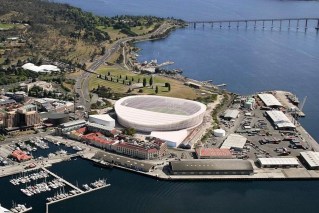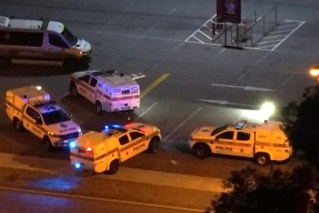Thousands of people are being evacuated after the largest dam in Ukraine was blown up, unleashing catastrophic floodwaters downstream.
About 80 towns and villages lie in the path of torrents pouring from Nova Kakhovka, known by locals as the Kakhovka Sea for its vast size.
About 40,000 people may be affected as floodwaters gush down the Dnipro River – 17,000 people on the Ukraine-held side and 25,000 on the Russian-controlled east.
As Russia and Ukraine blamed each other for the disaster on Tuesday (local time), water swamped the regional city of Kherson, which could suffer devastation.
Early reports showed villages inundated, a building floating down the river and recently planted crops lost under water.
All 300 animals in the Kazkova Dibrova zoo are dead after the complex on the Russian-held riverbank was flooded, a representative said via the zoo’s Facebook account.
The Dnipro River separates Russian and Ukrainian forces in southern Ukraine and is now flooding a swathe of the war zone.
The vast Russian-controlled dam was one of the main geographic features of southern Ukraine, 240 kilometres long and up to 23 kilometres wide.
The dam supplied water to southern Ukraine’s agricultural land, including the Russian-occupied Crimean peninsula.
The water was also used to cool the Russian-held Zaporizhzhia nuclear plant.
‘Monumental catastrophe’
United Nations secretary general Antonio Guterres said it was a “monumental humanitarian, economic and ecological catastrophe”.
“This is another devastating consequence of the Russian invasion of Ukraine,” he said.
“We are seeing the effects in the city of Kherson, the town of Nova Kakhovka and 80 other towns and villages along the Dnipro river.
“Massive flooding. Large-scale evacuations. Environmental devastation. Destruction of newly planted crops.
“And added threats to the highly threatened Zaporizhzia nuclear power plant – Europe’s largest nuclear facility.”
The Geneva Conventions explicitly ban targeting dams in war because of the danger to civilians.
Ukraine’s President Volodymyr Zelensky accused Russian forces of blowing up the dam in a deliberate war crime.
But the Kremlin blamed Ukraine for sabotage, saying it was to distract attention from a counteroffensive that Moscow claims is faltering.
Some Russian-installed officials said the dam had burst on its own.
NATO’s Secretary-General Jens Stoltenberg called it “an outrageous act, which demonstrates once again the brutality of Russia’s war in Ukraine”.
Mr Zelensky blamed the destruction on “Russian terrorists”.
“The destruction of the Kakhovka hydroelectric power plant dam only confirms for the whole world that they must be expelled from every corner of Ukrainian land,” he wrote on the Telegram messaging app.
Russians had “carried out an internal detonation of the structures” of the dam.
“About 80 settlements are in the zone of flooding,” Mr Zelensky said.
Kremlin spokesman Dmitry Peskov told a regular news briefing it was an act of “deliberate sabotage” by the Ukrainian side.
“Apparently, this sabotage is also connected with the fact that having started large-scale offensive actions two days ago, now the Ukrainian armed forces are not achieving their goals, these offensive actions are faltering,” he said.
The UN nuclear watchdog said the Zaporizhzhia power plant should have enough water to cool its reactors for “some months” from a separate pond above the reservoir. It called for the pond to be spared.
The water level at the town immediately adjacent to the breached dam could rise by up to 12 metres, its Russia-installed mayor, Vladimir Leontyev, said on Telegram.

A man tries to save a cow in a flooded district of Kherson. Photo: Getty
The dam breach came as Ukraine prepares its long-awaited counteroffensive to drive Russian forces from its territory, using newly supplied Western tanks and armoured vehicles.
Moscow has said the Ukrainian offensive began on Sunday and has claimed to have repulsed Ukrainian advances.
Ukraine and Russia have both asked the United Nations Security Council to meet to discuss the dam.
By mid-morning on Tuesday (local time) in the city of Kherson on the Ukrainian-held side, a pier on a tributary of the Dnipro had already been submerged by the surge climbing the banks.
On the Russian-controlled bank of the Dnipro, the mayor of Nova Kakhovka said water levels had risen to 11 metres.
Residents told Reuters by phone that some had decided to stay, despite being ordered out by occupying Russian forces.
“They say they are ready to shoot without warning,” said one man, Hlib, describing encounters with Russian troops.
“If you come a metre closer than allowed, they immediately start yelling obscenities. We’re still allowed to go to the store but we don’t know what orders will be given next.”
Local woman Yevheniya said the water was up to the knees of the Russian soldiers walking the main street in high rubber boots.
“If you try to go somewhere they don’t allow, they immediately point their machine guns at you,” she said.
“More and more water is coming every hour. It’s very dirty.”








